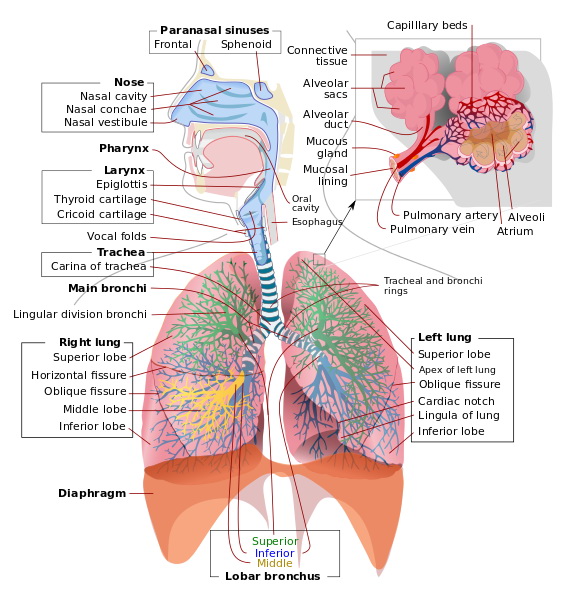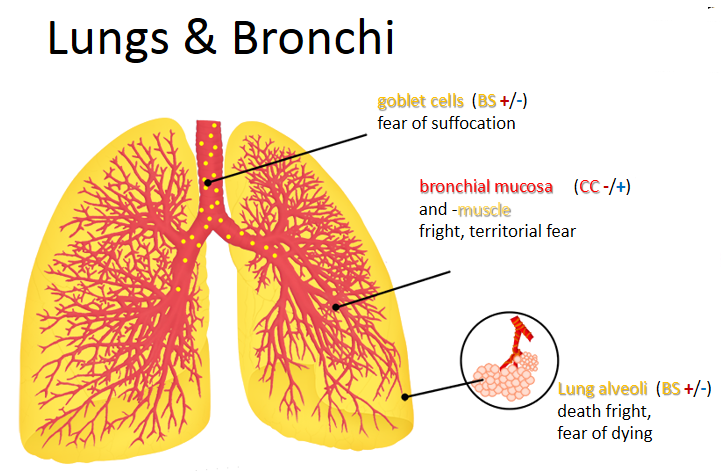The respiratory system (or ventilatory system) is the biological system that introduces respiratory gases to the interior and performs gas exchange. It’s anatomical features include airways, lungs, and the respiratory muscles. Molecules of oxygen and carbon dioxide are passively exchanged, by diffusion, between the gaseous external environment and the blood. This exchange process occurs in the alveolar region of the lungs.
The respiratory system performs cellular and external respiration. Cellular respiration refers to cellular metabolism that consumes oxygen – mitochondria play a key role here.. External respiration is the exchange of gases between the atmosphere and the cells of the body. It includes ventilation, gas exchange at the lung and cells, and transport of gases into the blood. Ventilation is the movement of air into and out of the lungs. The respiratory system consists of anatomical structures involved in ventilation and gas exchange.
The upper respiratory tract includes the mouth, nasal cavity, pharynx, and larynx. The lower respiratory tract includes the trachea, bronchi, bronchioles, and exchange surfaces of the alveoli. The upper respiratory system filters, warms and humidifies inhaled air.

META-Organs
From a META-Point of View we distinguish several organs and organ tissues in the respiratory system based on their unique stress-emotion-belief associations and brain relay locations.
- Nasal (Sub-)Mucosa 1 (BS +/-): Smell, analysis for usefulness
- Nasal Mucosa 2 (CC-/+): Smell, recognition, judgement
- Nasopharynx (BS +/-): Assimilation, Analysis
- Larynx Mucosa (CC -/+): fright, speechlessness, fear of competition
- Larynx Muscle (CC -/+): fright, speechlessness, expression
- Bronchial Mucosa and Muscle (CC -/+, MB +/-): Fear of competition, expression, speechlessness
- Branchial/Pharyngeal Arches (CC -/+): Frontal fear, powerlessness
- Lungs – Alveoli (BS +/-): survival, death fright, “freeze”-response
- Lungs – Bronchial Goblet Cells (BS +/-): fear of suffocation
- Lungs – Pleura (CB +/-): protection of the lungs
- (Thoracic) Diaphragm (BS +/-, CM -/+): Rhythm, Standstill, Overload
- Respiratory Muscles (CM -/+): Self-Devaluation regarding breathing

The text links lead into the META-Wiki in MHI’s members portal
Study biological programming and how it can relate to mental and physical dis-ease to help the World be META-healthy!
pictures: wikipedia, MHI
